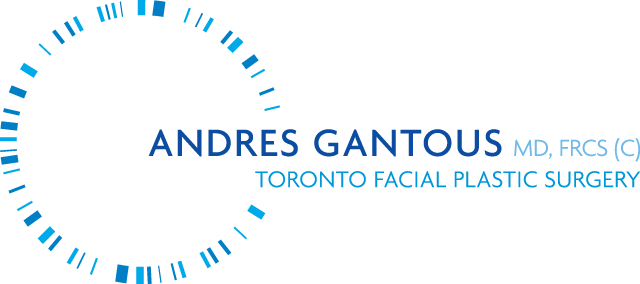A chin implant procedure is an affordable and feasible solution for a wide range of chin and neck problems, but it’s only as effective as the patient’s commitment to maximizing the results. It takes a lot of forethought and preparation to ensure that you’re both mentally and physically ready to undergo a chin augmentation procedure. First and foremost, you need to be completely sure that this is what you want. Second, you need to define your goals and expectations for this procedure and discuss them in-depth with your facial plastic surgeon to make sure you’re both on the same page.
As you get older, you might notice that the shape and structure of your chin has begun to change. Some people notice that more fat deposits are stored in their chins as their bodies have a harder time breaking them down with age. Others might experience a receding chin line. Both of these concerns can be addressed through a chin implant procedure.
"*" indicates required fields

What Are the Different Types of Chin Augmentation?
The medical term for chin augmentation is genioplasty. There are two types of genioplasty: chin implants and sliding genioplasty. These procedures can be performed by a facial plastic surgeon or a maxillofacial surgeon (a surgeon who specializes in performing surgery on the mouth or jaw).
Chin Implants
Chin implantation is a cosmetic procedure that’s designed to alter the aesthetic appearance of the chin by reshaping or increasing or decreasing the size of the chin. Depending on the patient’s needs and preferences, this procedure can either be done through surgery or intravenously.
Surgical implants involve making discreet incisions on the sides of the face just below or behind the earlobes. A synthetic plastic material is then carefully inserted into the chin and secured to the bone.
For those who prefer the nonsurgical approach, fillers will be injected into the chin area with the goal of enhancing appearance of the chin, giving it more definition.
Sliding Genioplasty
Also referred to as osseous genioplasty, this procedure involves the surgeon cutting the chin or jawbone down using a surgical saw. The idea is to correct chin deficiencies by reshaping the jaw bone and creating a more stable structure.
Sliding genioplasty is more suited for individuals who have retrogenia, a genetic condition in which the chin protrudes backward toward the neck—it’s also referred to as a weak or receding chin. In most cases, retrogenia doesn’t negatively impact the functionality of the jaw or mouth or the person’s quality of life, but severe forms of the condition can cause laboured breathing for infants, which is why it needs to be corrected.
Chin Implant Pre-Surgery Preparation
Every surgical or nonsurgical procedure requires at least some level of preparation on the patient’s part. Prior to your chin implant surgery, you’ll be required to attend a consultation with your facial plastic surgeon. During this appointment, they’ll take the time to examine your chin and explain the procedure to you. They’ll also provide you with detailed instructions on what you should or shouldn’t do to prepare for the procedure. This is the perfect opportunity to ask any questions and address any concerns you may have about the procedure.
Here are some general but important chin implant preparation tips to keep in mind before your procedure.
Quit Smoking
As always, it’s highly recommended that you quit smoking. Smoking not only allows carcinogens and toxins to enter into the bloodstream, but it also prevents the blood from delivering oxygen to the organs and this can severely hinder the healing process.
Avoid Certain Medications
Certain over-the-counter medications, pain relievers, and even supplements should be avoided prior to your procedure as they may contain anti-inflammatory ingredients or properties that can cause prolonged bleeding during and after the procedure. Make sure to provide a complete list of your medications to your facial plastic surgeon so that they can work with your physician to come up with the best treatment plan for you.
Make Practical Arrangements in Advance
In the week or two before your procedure, make sure to get all your major chores done and out of the way so that you can come home to a clean and tidy house and get some rest. You should also purchase a few easy to wear button-down shirts or zip-up garments if you don’t already have them because you won’t be able to wear pullovers for a while.
Your facial plastic surgeon may prescribe a general or local anesthetic for your procedure, so you should make arrangements to get a ride to the clinic and back home on the day of your surgery.
Making these arrangements in advance ensures that everything will go off without a hitch during your procedure.
Chin Implant Recovery Tips
Preparing for the recovery period is just as important as preparing for the procedure itself. As mentioned, you should make transportation arrangements in advance to ensure you can get home safely on the day of the procedure. But there are other things you can do during the recovery period to make it go more smoothly.
Follow All Aftercare Instructions
Following aftercare instructions may seem obvious, but it bears repeating. Your surgeon will provide you with a complete list of aftercare instructions. Make sure to follow them so that you can maximize the recovery time.
Eat a Liquid Diet
Chewing solid foods might be difficult and even painful for the first little while, so make sure you have plenty of soft foods like yogurt, pudding, or even smoothies available.
How Long Is the Recovery Period?
Injectable chin implants don’t really have a long recovery period to speak of since they’re a nonsurgical procedure. Most patients are kept in the office for about a half an hour for observation, but are free to go after that.
Surgical chin implants are a different story. The first week is usually the hardest part and you may notice some swelling, redness, or bruising around the incision sites. These are perfectly normal signs of healing. Within the first two weeks or so, you should be able to resume most of your regular activities including returning to work, but continue to avoid strenuous movements and heavy lifting for at least three to four weeks following the procedure.
Thinking of getting a chin implant procedure? Dr. Gantous at Toronto Facial Plastic Surgery has well over 20 years of experiencing performing all kinds of facial procedures and he’s helped hundreds of patients improve their appearances and their quality of life. Contact us today to book a consultation!

